 |
 |
 |
| |
Increased incidence of emergent integrase drug resistance with cabotegravir versus dolutegravir in randomised switching trials
|
| |
| |
AIDS 2024 July 20-26 Munich
A. Perez Navarro1, M.J. Siedner2,3, S.M. McCluskey2,3, A. Hill4
Institutions
1Imperial College London, Faculty of Medicine, London, United Kingdom, 2Massachusetts General Hospital, Division of Infectious Diseases, Boston, United States, 3Harvard Medical School, Boston, United States, 4University of Liverpool, Department of Pharmacology and Therapeutics, Liverpool, United Kingdom
ABSTARCT
BACKGROUND: The long-acting injectable regimen of cabotegravir plus rilpivirine (CAB/RPV), has been evaluated for treatment of HIV, predominantly in switch studies for people with HIV who have achieved virologic suppression. Improved adherence from long-acting treatments is hypothesized to decrease risk of treatment failure and treatment-emergent resistance. Yet, comparisons between failure and resistance rates for this injectable regimen versus oral integrase inhibitor regimens have not been made.
METHODS: We conducted a systematic review of clinical trial registries, PubMed and EMBASE to identify all randomised controlled trials of CAB/RPV or dolutegravir (DTG) for people switching after obtaining virologic suppression (HIV RNA<50 copies/mL). We extracted 48-week (±4 weeks) data on virologic failure (VF) and emergence of HIV drug resistance mutations (DRMs), defined as presence of major integrase inhibitor (INSTI) mutations, based on the Stanford algorithm. We compared incidence of VF and emergent DRMs between CAB/RPV and DTG trials using Fisher’s exact tests.
RESULTS: Seven switch trials were identified for CAB/RPV (n=2588), and eleven trials were identified for DTG (n=2733). In trials of CAB/RPV, 26/2588 people (1.0%) developed protocol-defined VF, versus 28/2733 (1.0%) in trials of DTG (p=1.00). In CAB/RPV trials 17/26 people with VF (65%) had major INSTI DRMs versus 0/28 (0%) in DTG trials (p<0.0001). The predominant major INSTI-associated DRMs arising in the CAB/RPV trials were Q148R (30%), N155H (27%), E138K (12%), G140R (12%), and Q148K (7%). Intermediate or high-level cross-resistance to DTG in the CAB/RPV trials was present in 7/17 (41%) cases with INSTI DRMs.
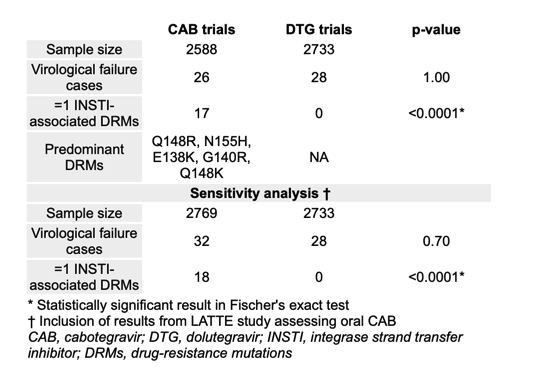
CONCLUSIONS: Treatment-emergent INSTI resistance was more common with use of CAB/RPV than for DTG in switch trials, despite the perceived adherence benefits associated with long-acting formulations. Significant cross-resistance with DTG was seen for those failing CAB/RPV with resistance. Close monitoring of INSTI resistance in individuals and populations may be warranted as injectable CAB is more widely implemented.
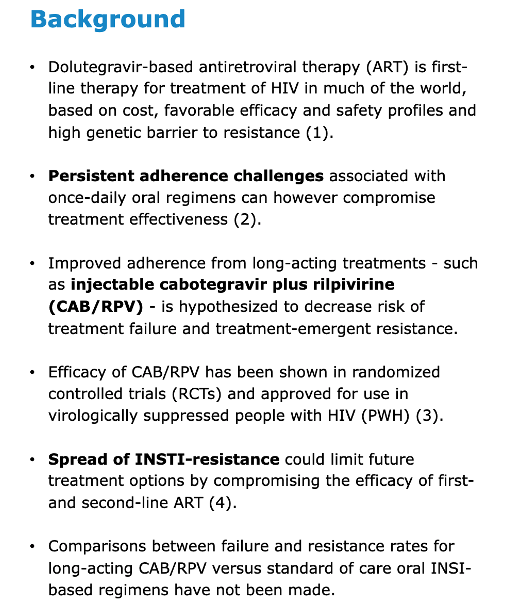
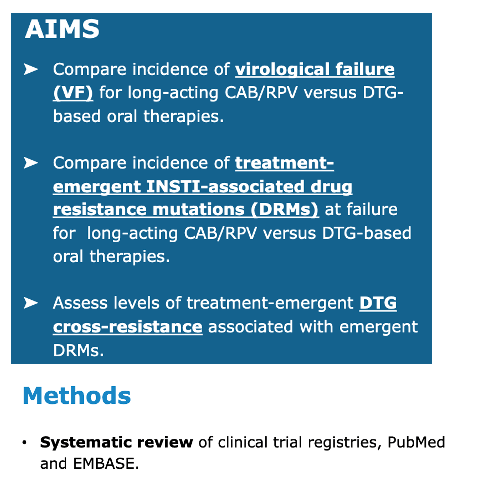
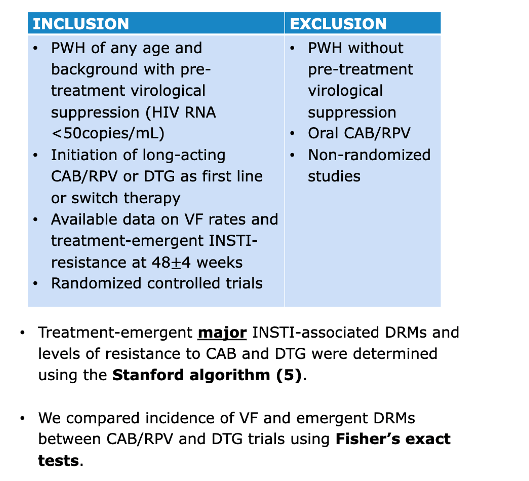


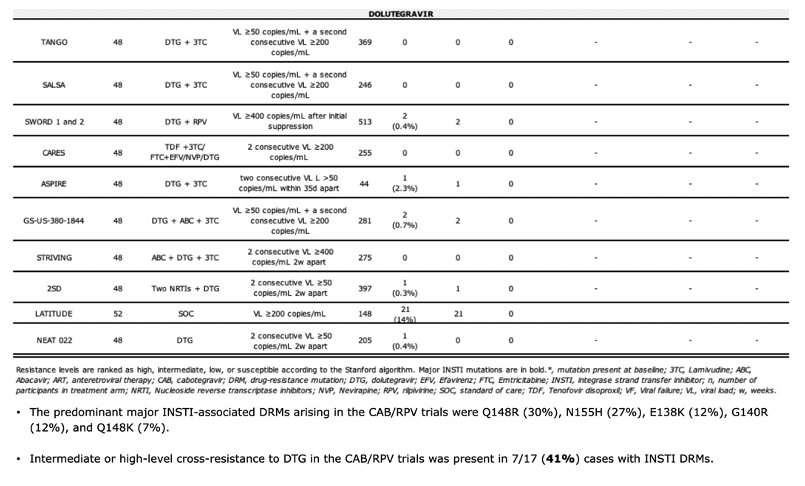
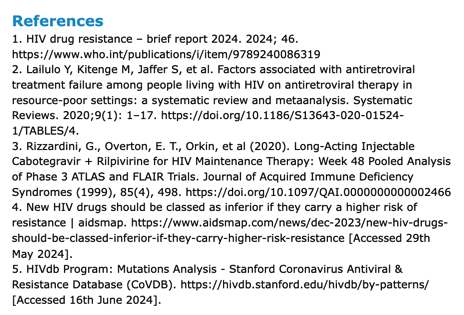
|
| |
|
 |
 |
|
|